
Transition Covert Review
Last Spring I stopped by Transition bikes Ferndale, WA headquarters to say hello to owners Kevin Menard, Kyle Young and the rest of the crew there. During the course of a BBQ, jump session on their company track out back and mini bike races around the parking lot (clearly they know how to have fun at Transition), I noticed a well worn, unpainted bike built up in the corner. I asked Kevin what it was and he grinned like a man who knew a very juicy secret. “It’s the new Covert” he said. After a full walk-through with Kevin I took a quick spin around the parking lot and the pump track and I could clearly see the potential of the new design. When I got back I asked him when they expected production copies of the new frame; “late summer.” As a dedicated bike junkie my response was predictable: “Call me when they get here”.
The new Covert, freshly built and dreaming of big mountains. I think this bike is easily the best looking offering from Transition to date.
The original Covert was a 5-inch travel enduro trailbike that debuted in 2007. It was, in traditional Transition style, overbuilt for its intended usage. Some people called it heavy. Transition called it durable and sold a bunch of them to riders looking for bikes to be pushed hard in technical all-mountain terrain. Even so, when Kyle and Kevin started encountering heavily-built Coverts popping up on serious Shore lines and even at the Whistler Bike Park they were a little taken aback. Proud, because the bike could take it, but concerned because as Kevin puts it, “it really wasn’t the application we designed the original frame for.” So when it came time to pull out a clean sheet of paper and bring the the new Covert to life, Transition had three simple goals: make it just as strong as the old frame; expand its capabilities and keep the weight the same (or decrease if possible).
The tapered head tube junction complete with long weld surfaces and a beefy gusset. The end result of all this metal is a bike that tracks very well through the chunkiest sections of trail.
The new Covert marks a bunch of firsts for the boys from Ferndale. It was the first proprietary tubeset designed exclusively for one of their bikes. It was their first use of a tapered headtube and the first time they have used curves extensively in one of their frames. All of these have carried over to other designs that have rolled out since the Covert came online (i.e. the TR450 DH race bike). Transition has always made a tough bike, in fact it is an identity that they really hang their hat on. They have been doing “tough” since they started but now they wanted to go further and do tough that was beautiful as well. Designing the tubeset from the ground up just for this bike allowed them to do everything they wanted to. They incorporated the curves and optimized frame material where it was need the most. The end result is not only an engineering achievement but also a frame that provides a stark departure visually from the heavier looking, more industrial Transition frames of the past. In short, it puts form on an equal footing with function.
The Bike
The original prototype I spied in Transition’s warehouse was basically the bike that arrived in production with two significant changes. The first change was an altered head angle. On the prototype the head tube was 68 degrees and most of the crew liked it well enough but felt it needed just a little more. So the bike went to production with its now-standard 67 degree head tube. To make up the difference the top tube was shortened. The other less notable change was the rear seat stays. On the prototype they were round stock and on the production version Transition decided to go with their more familiar square tubing, as it gave them a little more control over the internal tube profile. I was on the fence between the medium and large size in the proto version, but with the top tube getting shortened for production, I settled on a large frame quite easily. The wheelbase is a fairly long 1170 mm and the bottom bracket sits at just under 14 inches high.
The square tubing Transition settled on for the rear stays makes a perfect platform for the new internal cable routing. Even after nine months with the bike, I am still drooling over that green color when the sun hits it.
Transition was nice enough to let me snag the frame fresh off the boat before it had even been built up. Kevin asked if I could build my own bike as they were so busy trying to get the new Coverts out to their dealer network. I actually prefer building my own rides so we walked around the warehouse, grabbed all the parts, loaded up a cart and got me out the door. A day later the Covert rolled out of my home shop ready for the trail. The kit we assembled was definitely focused on all-mountain versatility. The fork was a Fox 36 Talas R and bump-eating duties out back fell to the trusted Fox Float RP23. The running gear was straight SRAM, with X9 shifters and derailleurs mated with a Truvativ Stylo cranks and Avid Elixr CR brakes. Pedals and wheels were Transition’s own (Stepdown and Revolution AM’s respectively) while cockpit showed off more SRAM goods including a 60mm Holzfeller stem and Stylo Team bars. Topped off a with Truvativ post, a Transition saddle and wrapped up in Maxxis rubber, (Advantage 2.4’s front and rear) what I ended up with is a machine just over the 32 pound mark, with 6 inches of travel on both ends – and ripe with possiblities.
The custom drawn traingular downtube offers some solid weld surfaces for the rear shock mounts, as well as a pretty sexy profile. Don’t be fooled by the beauty though, this bike is brawny.
The frame itself is really the main attraction. Transition was started in Seattle a.k.a. the “Jet City”, and the new frame’s strongly curved lines definitely evoke that city’s aviation heritage. The thing looks ready to fly right out of the box. I got the green version (it also comes in white, orange and a raw finish) and it is a deep, sultry green that has garnered a ton of positive comments on the trail. When the sunlight hits it, I describe it as “electric enamel”.
Underneath its gorgeous coat this bike is all business. The one piece CNC’d rocker link is burly looking and definitely keeps the rear suspension on track throughout the whole stroke. The other less notable but equally influencing feature on the rear swingarm is the solid bridge just behind the bottom bracket pivot. Connecting both chainstays, this vertical block of aluminum is 45 mm tall and 12 mm thick. Translation? Significant swingarm flex is a thing of the past.
The buck stops here: the one piece CNC’ed shock link keeps everything in line and cycling smoothly. Oversized bearings also help limit any flex in the back end of the frame.
The rest of the frame is equally solid with a wedge-shaped head tube gusset, top tube/seat tube bridge, large weld surfaces for all the shock mounts and over sized pivots throughout the suspension linkage. Despite all this apparent extra beef and an additional inch of travel the new covert frame weighs the exact same amount as the old one. Such is a the magic of custom drawn tubesets for any given application. Another first on this frame is the internal rear derailleur cable routing (it heads through the chainstay). Just a thoughtful aesthetic touch on a frame that is full of them.
The Ride
Once the bike was together and the sag properly set I headed off for a few quick shakedown cruises to get a feel for the new beast. Playing with suspension on a new bike is a must if you are going to get the most out of it. Some frames are finicky and others are less demanding in terms of an exacting setup. The back end of the Covert was definitely on the easier side to dial in. Having a bunch of time on Fox’s RP23 certainly helped, but all in all this frame is a basic “set sag and ride” proposition. The Talas 36 on the front was a bit of a different story.
The Covert likes to be railed. The faster you go the more fun it is. Slack angles, plenty of travel and a very solid frame make it a bike that craves a good beating. | photo: Jim Clagett
The seals seemed stiff at first and I used less pressure to compensate so that I could get full travel. Gradually as the seals broke in the fork would begin to wallow a bit and I would add a bit of pressure to compensate. After two or three additions I imagined I was at the optimal setting and could just dial it up or down from there for fun… but it kept feeling softer and plusher. I was not losing any pressure, the fork just continued to break in. A month in to the test I was still adding air. At about the five week mark the fork finally hit its stride and from then on it delivered the plush, tuneable ride I have come to expect from Fox without any additional fuss.
Having just come off a riding a Float 36 RC2 I did miss the ability to dial high and low speed compression independently but the travel adjust feature of the Talas made up for that. The fork’s lowest setting is at 100 mm, the middle position at 130 mm and fully extended is 160 mm of travel. With the fork fully open the bike did tend to wander on climbs a bit so the 130 mm setting was handy for the uphills. Having the head tube as slack as it is, the 100 mm setting wasn’t much good as it just made the bike feel like a dragster; all jacked up in the back and dropped way down in the front. Bashing your pedals was almost a certainty in this setting as well, so I rarely used it. In the woods the 130 mm setting was fine for exceptionally twisty trails but most of the time I just rode the fork fully open and used the extra travel to make up for any turns I ran the wide line through.
Adding the Maxxis High Rollers to the bike made it a very capable all-day pedal machine. Folks who live where it is a little smoother might think 32 pounds is overkill, but it’s just fine around here. | photo: Jim Clagett
A strange feature of the frame’s design is that the Propedal setting on the rear shock seems to make almost no difference heading uphill. The bike bobs very little in any setting and all the Propedal seemed to do was stiffen the rear suspension ever so slightly… and the only time you noticed that was on level trails or downhill. Kevin and I talked about this and he had already experienced the same thing on his own personal Covert. He even went as far as to put a coil shock on the back and loved that setup, as it did not negatively affect the climbing of the bike.
Transition has taken to calling the Covert “The Quiver Killer” and I can see why. With all the stiffness and versatility packed in to the frame how the bike performs really just depends on how you build it. Want an all-day, up and down epic ride bike? Light wheels, single-ply tires, XC cranks, 160 mm rotors, carbon bars and clipless pedals. Done. Need an AM machine that makes the climbs possible and the descents rowdy and fun? Build it like we did for this test. Want an ultimate park bike that may have to be pushed up but won’t miss a trick on the way down? DH wheels and tires, 50 mm stem, DH cranks, chain guide, platform pedals, coil over rear shock and pin it to win it. It is like a “choose your own adventure” book packed in to a single bike frame. That in itself is quite an achievement.
The way the bike was configured for this test really made it a jack of all trades. I rode the bike in deserts and rainforests. I took it on shuttle runs and days where 2000 feet of climbing were on the menu. It was an after work spin bike and Shore rider. It feels long and fast with the relaxed head angle. With the fork wide open it begs too be pushed/drifted through corners. The solid feeling transmitted through the frame leads you to start seeking out the rougher, gnarlier lines just for fun. While it is not the fastest sprinting bike, once it is up to speed it likes to be kept there. Despite feeling a bit slack and long I never seemed to have issues with switchbacks. That is due in part to how solid the bike is. It never seems to wiggle awkwardly when you have it all crossed up in a tight corner.
Although it doesn’t come stock with a set of wings, maybe it should. The Covert liked to fly and had no trouble with the landings either; no matter how bad the pilot made them. | photo: Jim Clagett
The Covert is also a capable bike in the air. If you have ever spent time around the Transition crew you know most of them like their flight time on a bike. You are just as likely to find them sessioning their company dirt jumps out back or going big on Whistler’s A-Line as you are to find them behind their desks in the office on any given day. They all ride and ride hard, so it came as no surprise that the Covert was comfortable racking up frequent flyer miles. It doesn’t display any awkward tendencies off the lip of a jump and is light enough to be finessed while in the air. Landings also tallied in the “no stress” column. In short, despite looking a whole lot sexier than its predecessors it is still a Transition at heart. A bike born in the Northwest that is happy being smacked around on the full variety of trails this part of the world offers in abundance.
And smacked around it was. I had more big crashes on the Covert than any bike in recent memory. The first three had little to do with the bike and everything to do with tire choice. I got the bike last July and was just getting used to it when I headed back up to Bellingham to ride with the Transition staff and a bunch of their dealers who had flown in from around the country. It hadn’t rained in the six weeks since I had picked up the bike but on this day it decided to rain, and rain it did; hard… all day. It was raining when we showed up for breakfast and it didn’t let up until after dark. We of course rode anyway but the combination of the large volume, dry conditions Maxxis Advantage tire and the greasy, freshly wet trails on Mount Galbraith was vicious. I pounded solidly in to the terra firma three times over the course of the ride and came away with the requisite marks to show for my efforts. After that day I swapped out the Advantage’s for the more versatile and proven High Roller’s front and rear and never looked back.
This massive chainstay bridge is one of the main reasons the back of the bike tracks so well. Since it is vertically oriented it is very easy to clean as well… a big plus for riders familiar with lots of mud.
The bike came away in perfect shape and begging for more. And it got more. Last Fall on a frosty morning I was riding on a river trail in the foothills of the Cascades and lost the front end on an icy patch. I managed to hop off on the high side to safety but the bike pitched off the trail and down about five feet of bank landing with a thud, its bars twisted around backwards. After retrieving it and straightening out the brake levers the rest of the ride went off without a hitch. This went on for almost nine months. Despite the repeated beatings, to this day the bike is solid and ready to be ridden at a moment’s notice. The bike is tough like a bare knuckle boxer. I think most riders will wear out before this frame does.
Issues
In general this bike was free of issues and almost always ready to ride with very little care needed, but there are always a few bits to note for possible improvement down the road.
– I made note of this frame and fork combo being near-useless in the 100 mm setting. The combination the relaxed head angle and the low travel in front do not mix well.
– In general I liked the Transition Stepdown pedals included with the bike as they held up well and offered good grip underfoot. They were a bit on the large side though and I found myself snagging them slightly more than other designs when pedaling through the rough stuff, especially with the fork set at the 130 mm travel setting. Your results may vary.
– You will want to be careful if you build up the frame yourself. With the trend to try and get front ends as low as possible these days and the curve of this top tube, make sure to put enough spacers under the stem that the brake levers clear the tube when the bars spin around. I did initially, but as I adjusted the bars and lever angles later on I got to a point where the brake made contact with the top tube and left a groove on the tube during a crash. Clearly not something to blame on Transition as I built up the bike, but keep an eye on it if you do your own build.
– As pretty as this frame’s finish is, it might be nice to add a chainstay protector with purchase. The chain does a pretty good job at knocking the paint off the inside of the chainstay. Of course you can wrap it in an old tube, but wouldn’t nice neoprene or molded rubber protector look a lot sweeter on a bike this nice?
Final Thoughts
Transition has always been a company that you could count on for a few things: durability, performance and a solid value. With the introduction of this new Covert they have added beauty and versatility to that already potent mix. “Quiver Killer” is an apt description of this do it all machine. Build it up how you want it and then ride it, hard, for years. It isn’t a bike for all riders. Some folks will want less weight, steeper angles or more travel. However, for a large cross section of riders in the middle who want to “do it all” (in the aggressive riding spectrum that Transition has always catered to) this may be their finest work to date.
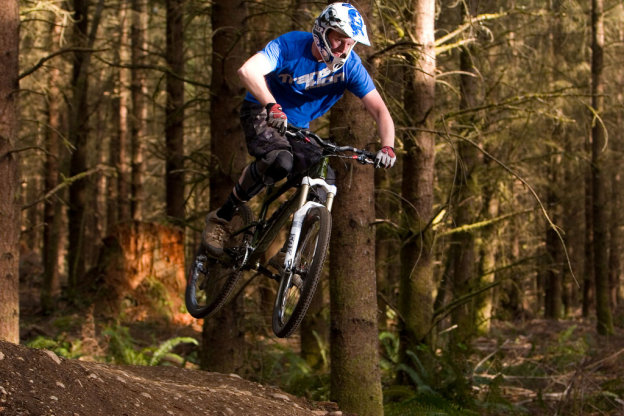
I will miss having the green beast around. It’s a joy to look at and just as much fun to ride. I’ll also have to think harder before I grab a bike on the way out the door. While the Covert was in the stable if I didn’t feel like making a decision (or it was just too early in the morning to attempt it) I could just grab it and go. I knew it would be able to handle most anything and usually it did; quite well for that matter. Simply put, it is a Swiss Army Knife of a bike and you will find yourself using it just about as often as that ubiquitous tool when you are out in the woods.
For full specs and pricing click here
Ever owned Covert or wanted to? Think the guys from Ferndale are on to something? Share, share, share right here…

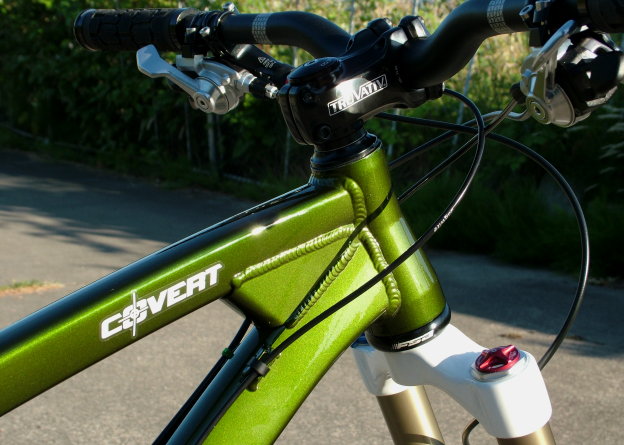
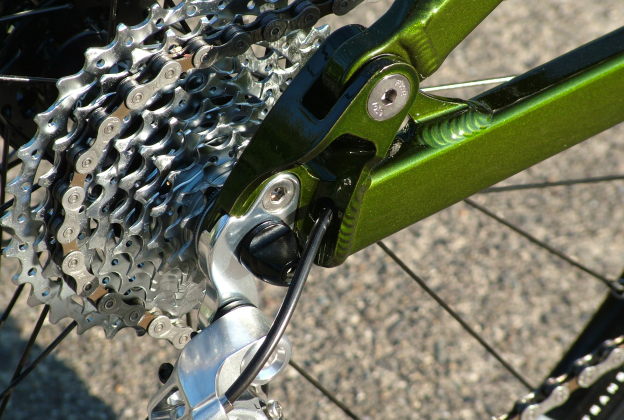
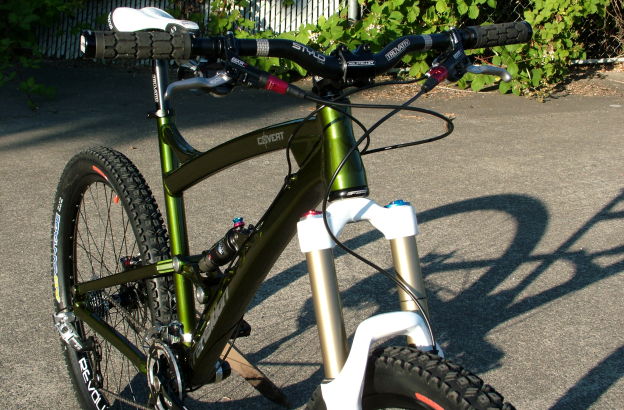
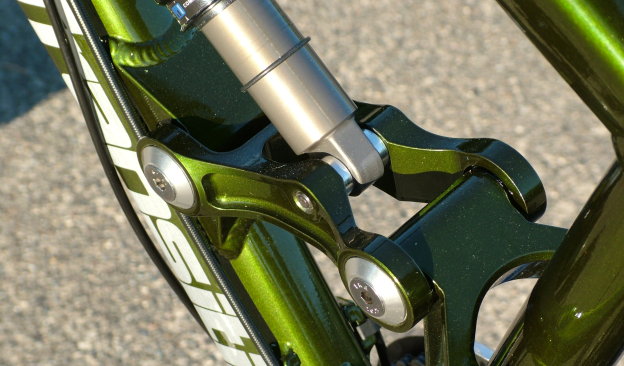
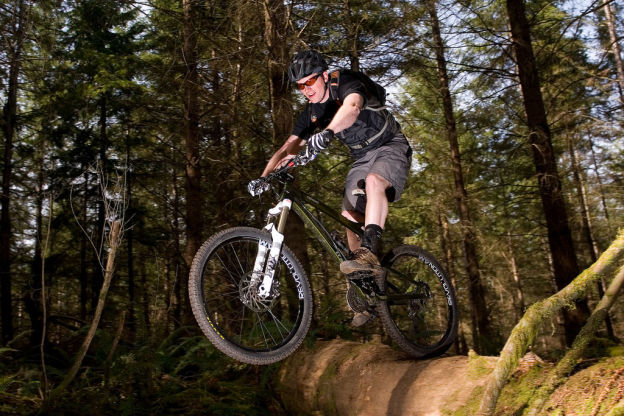
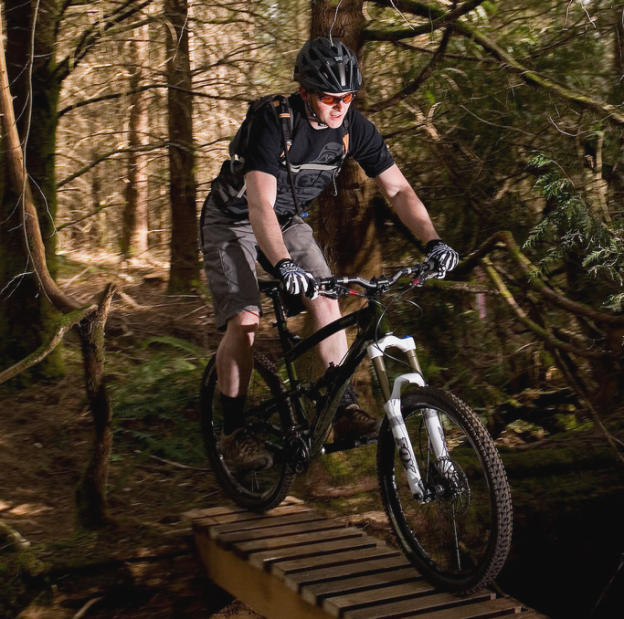
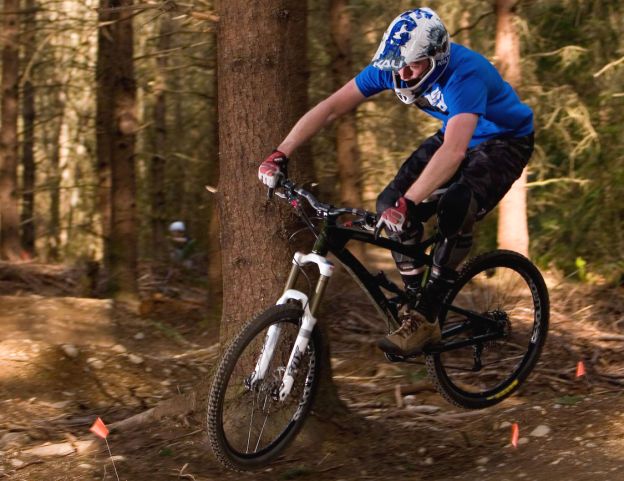
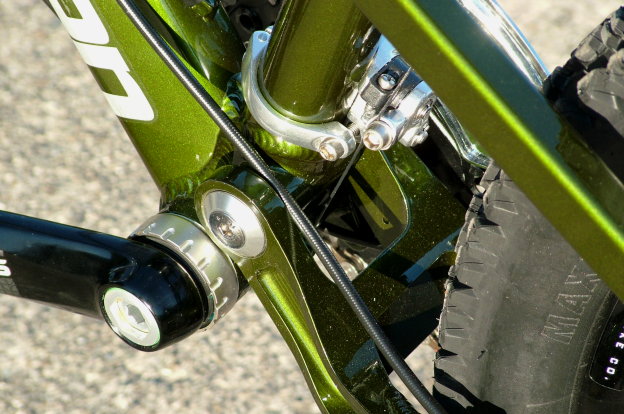







Comments
Please log in to leave a comment.